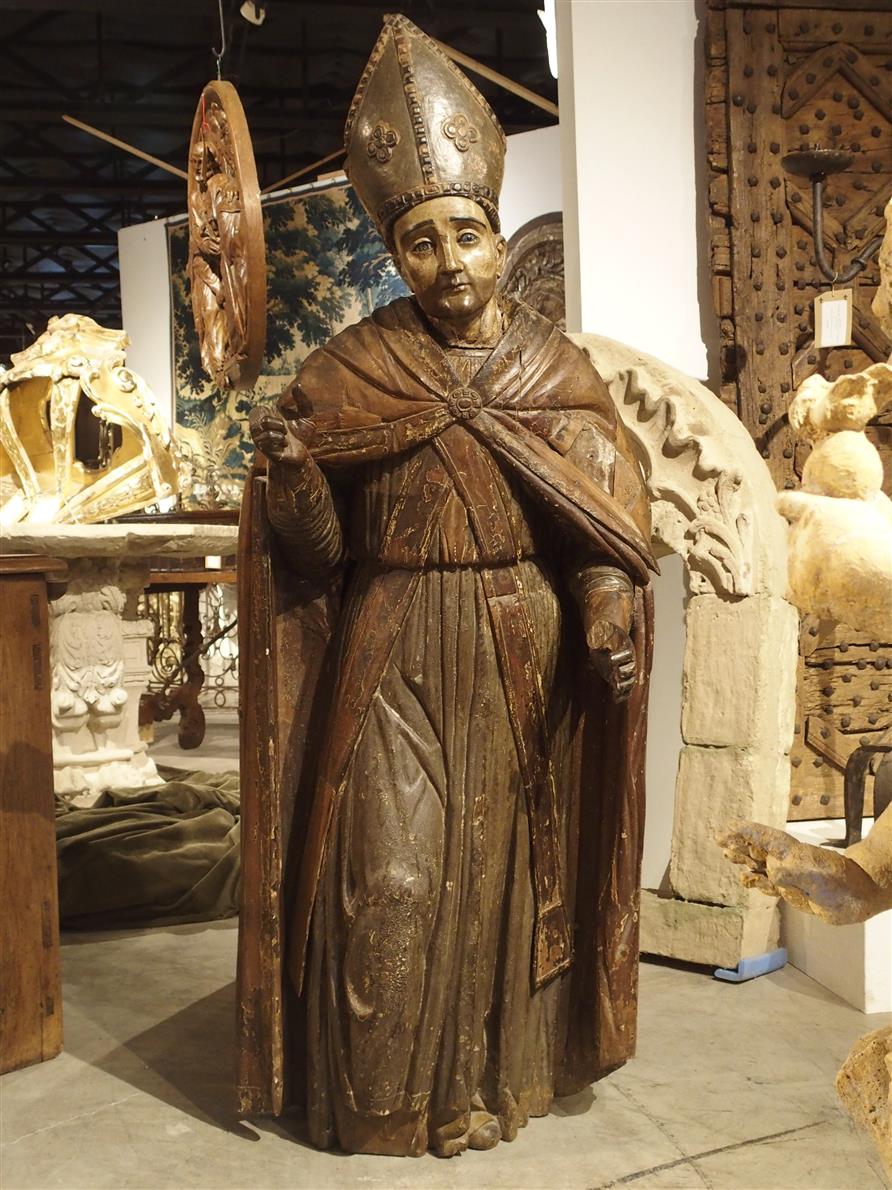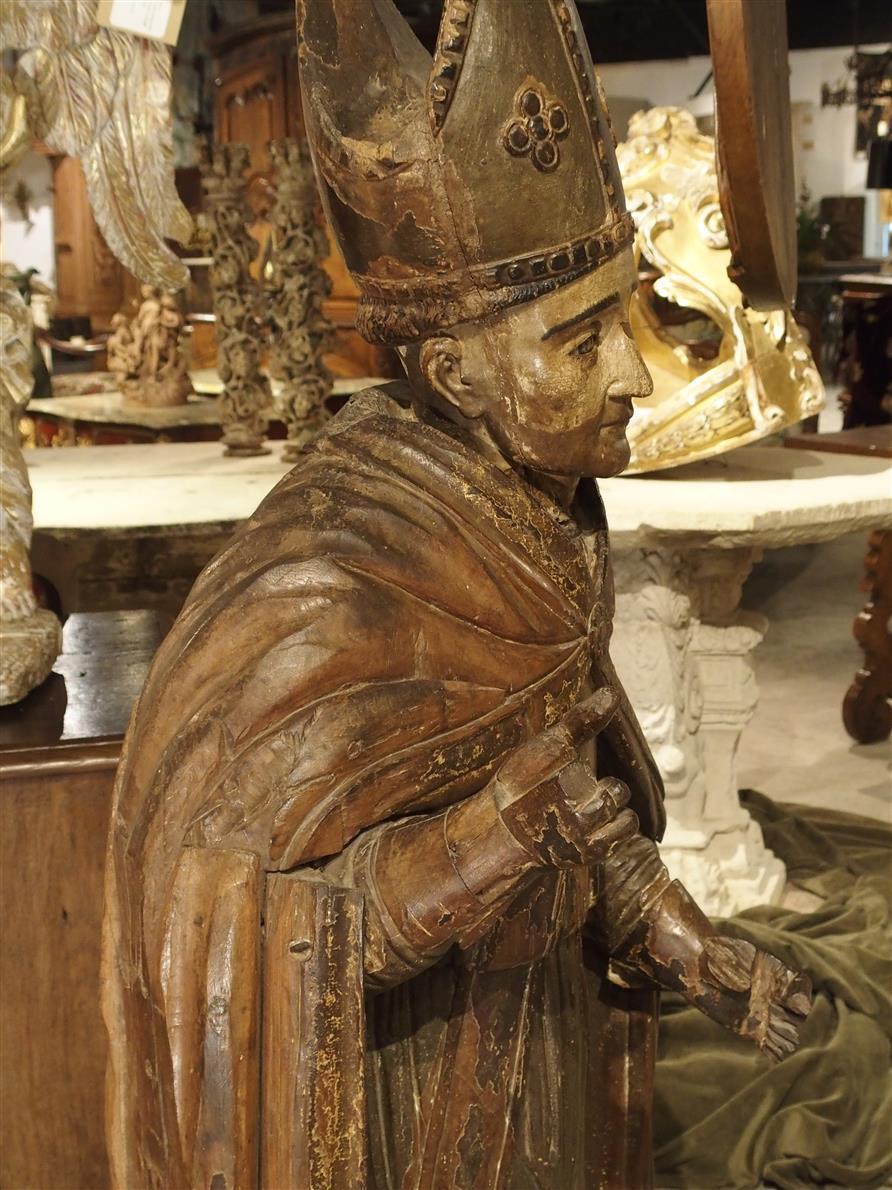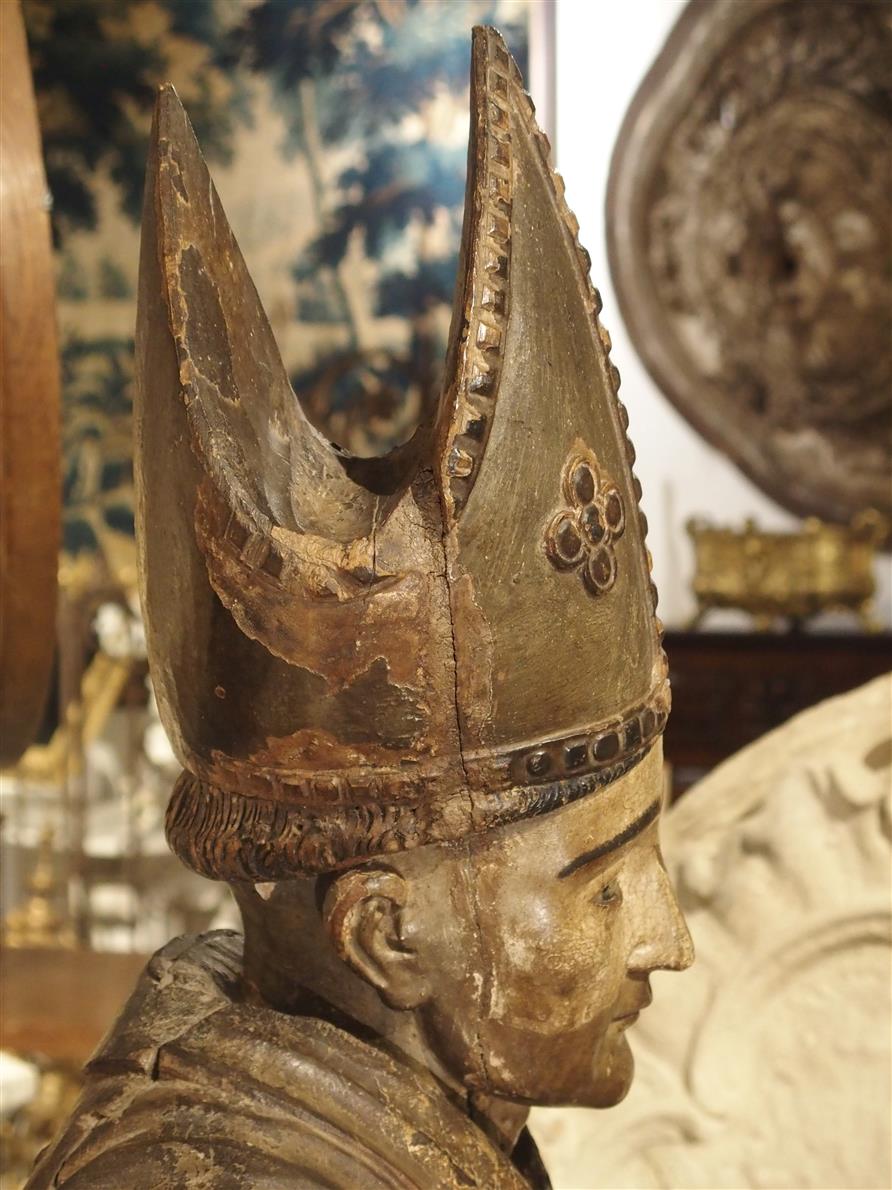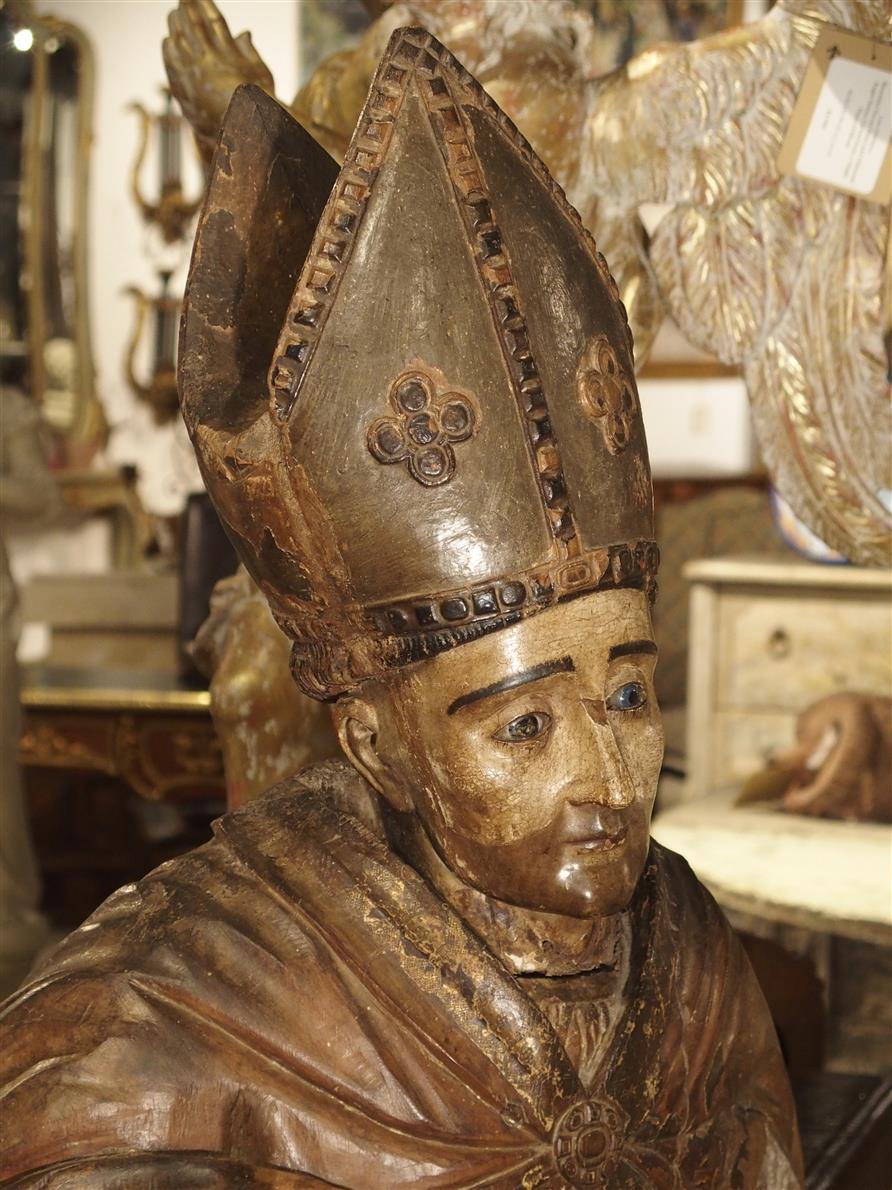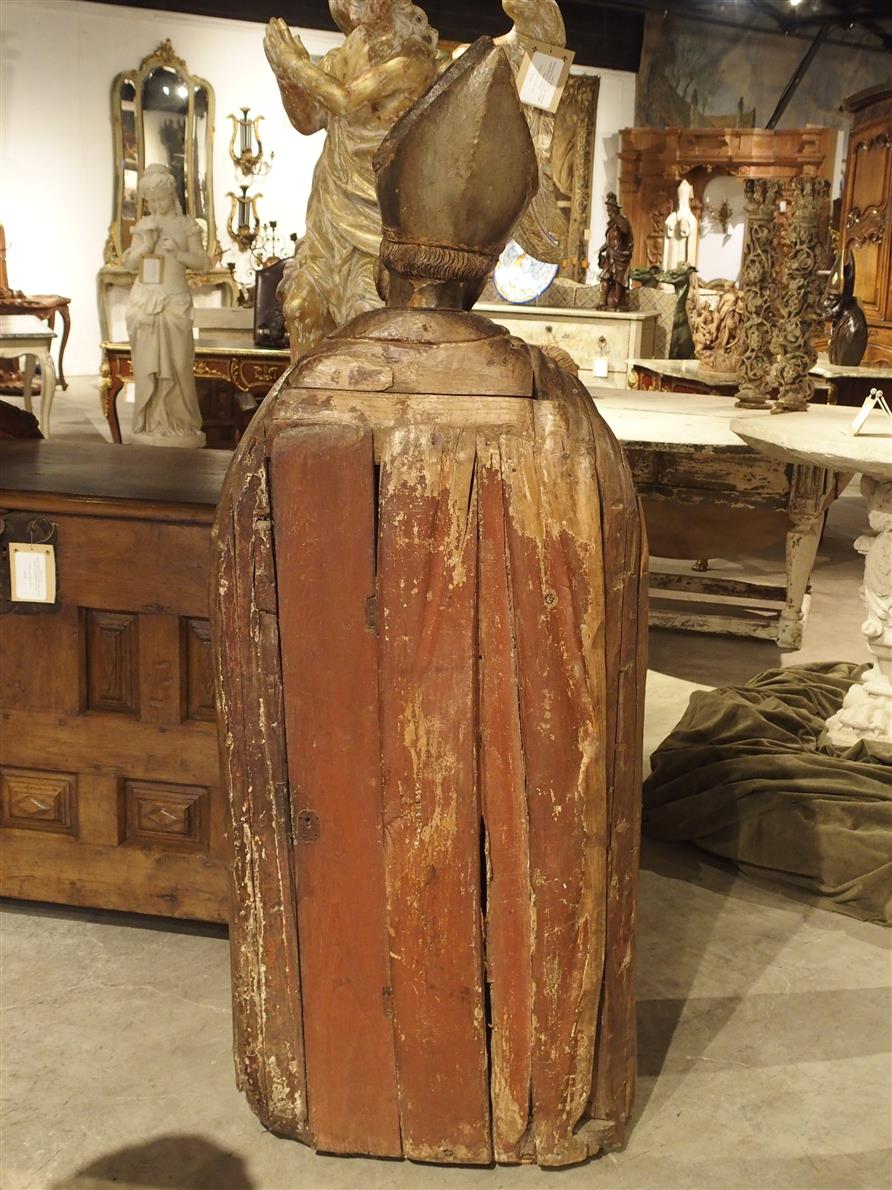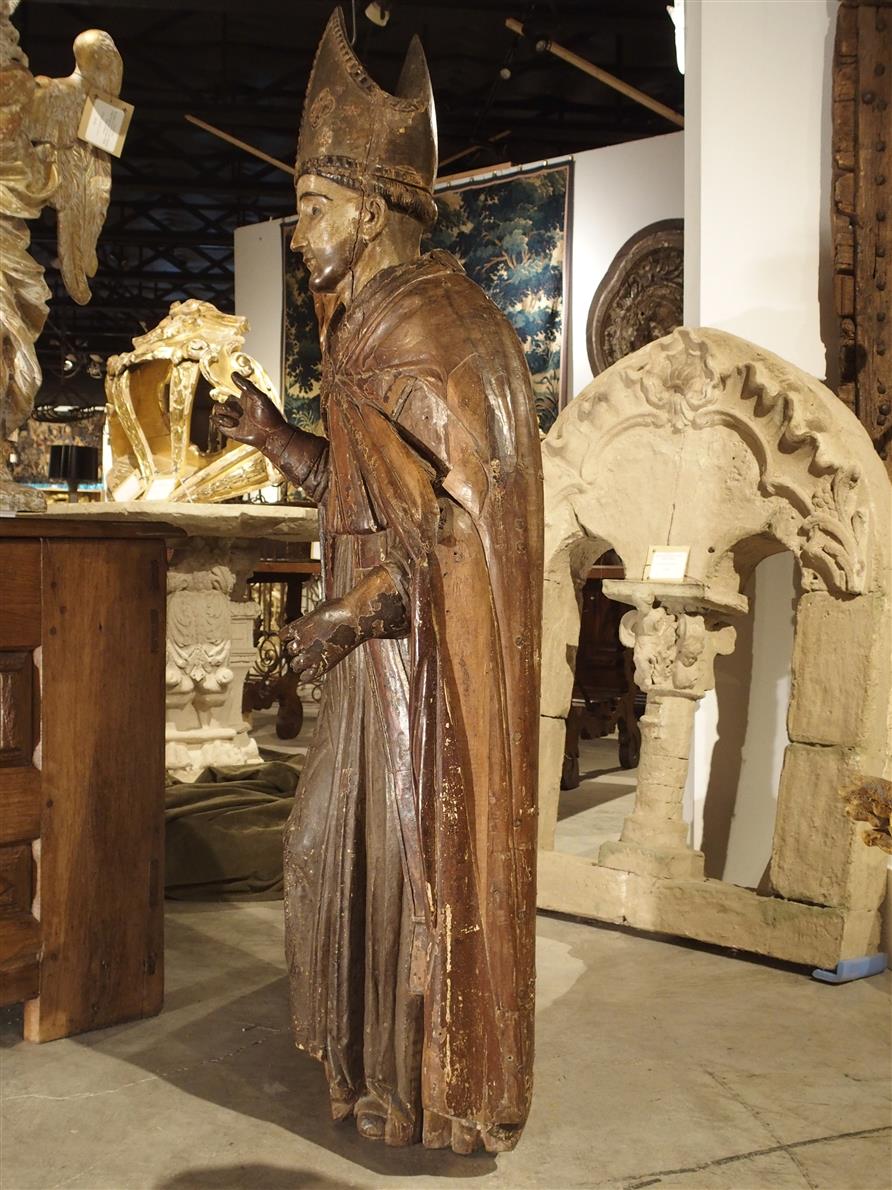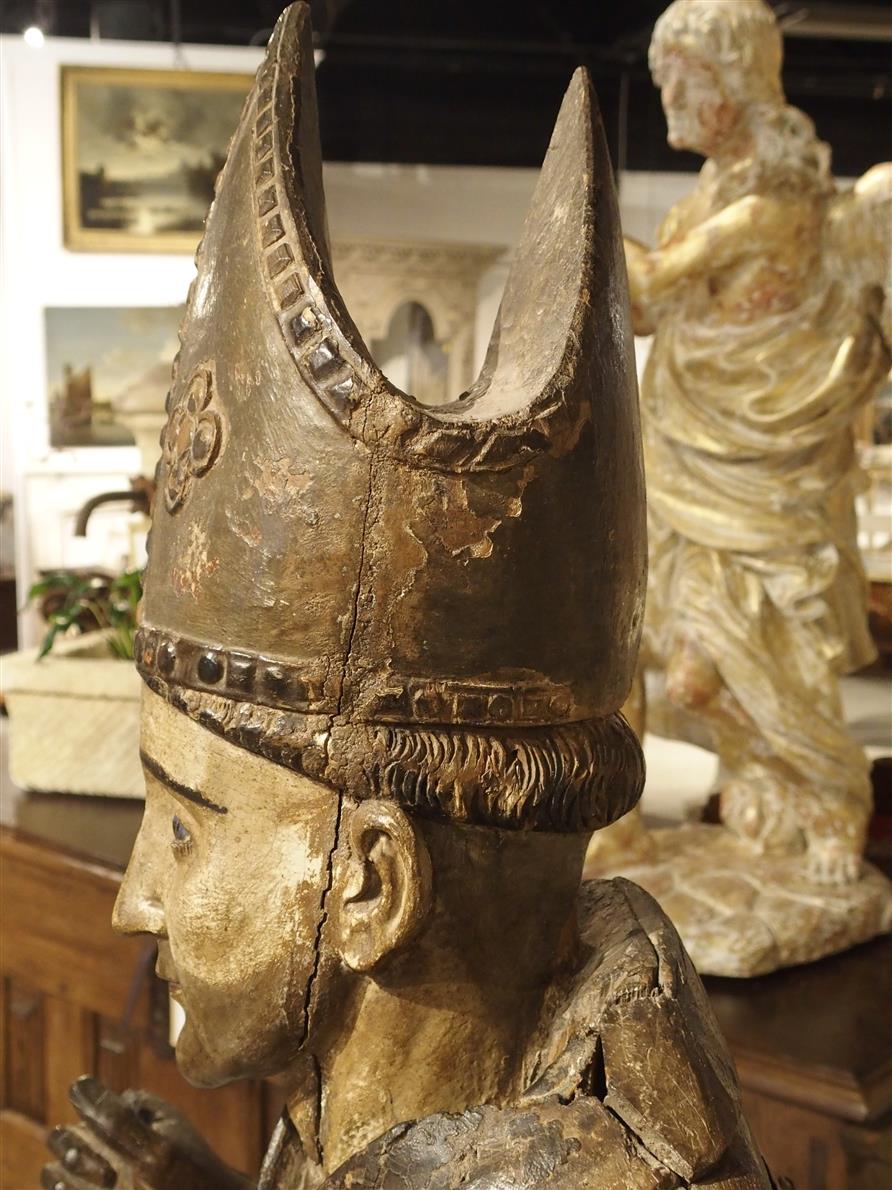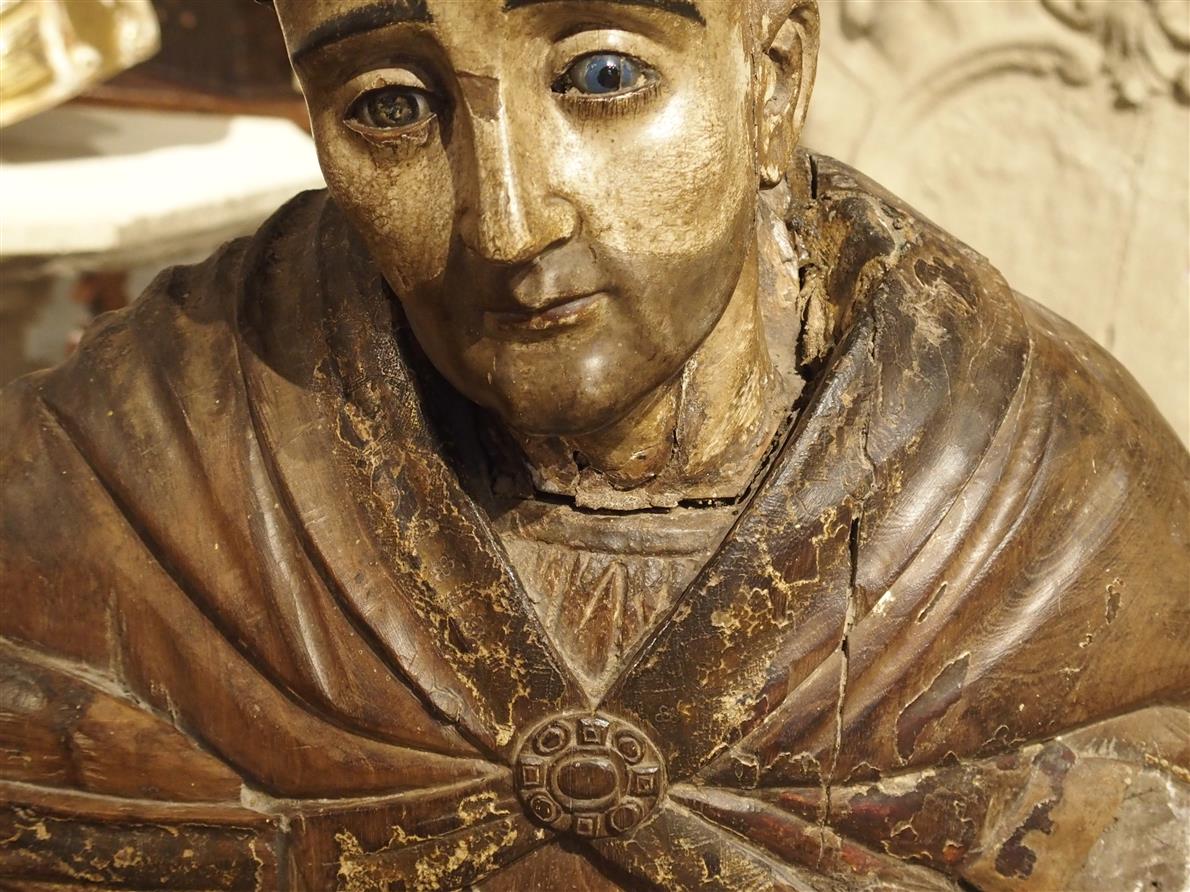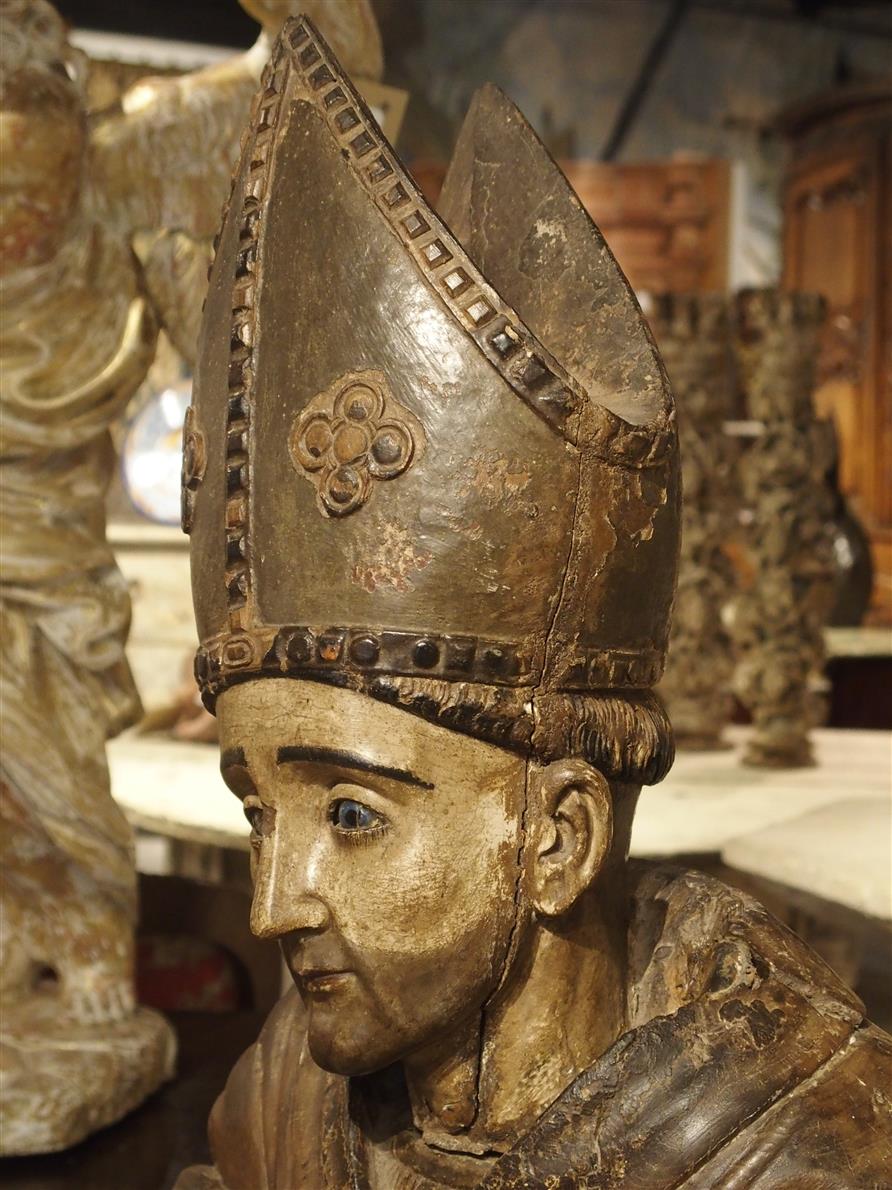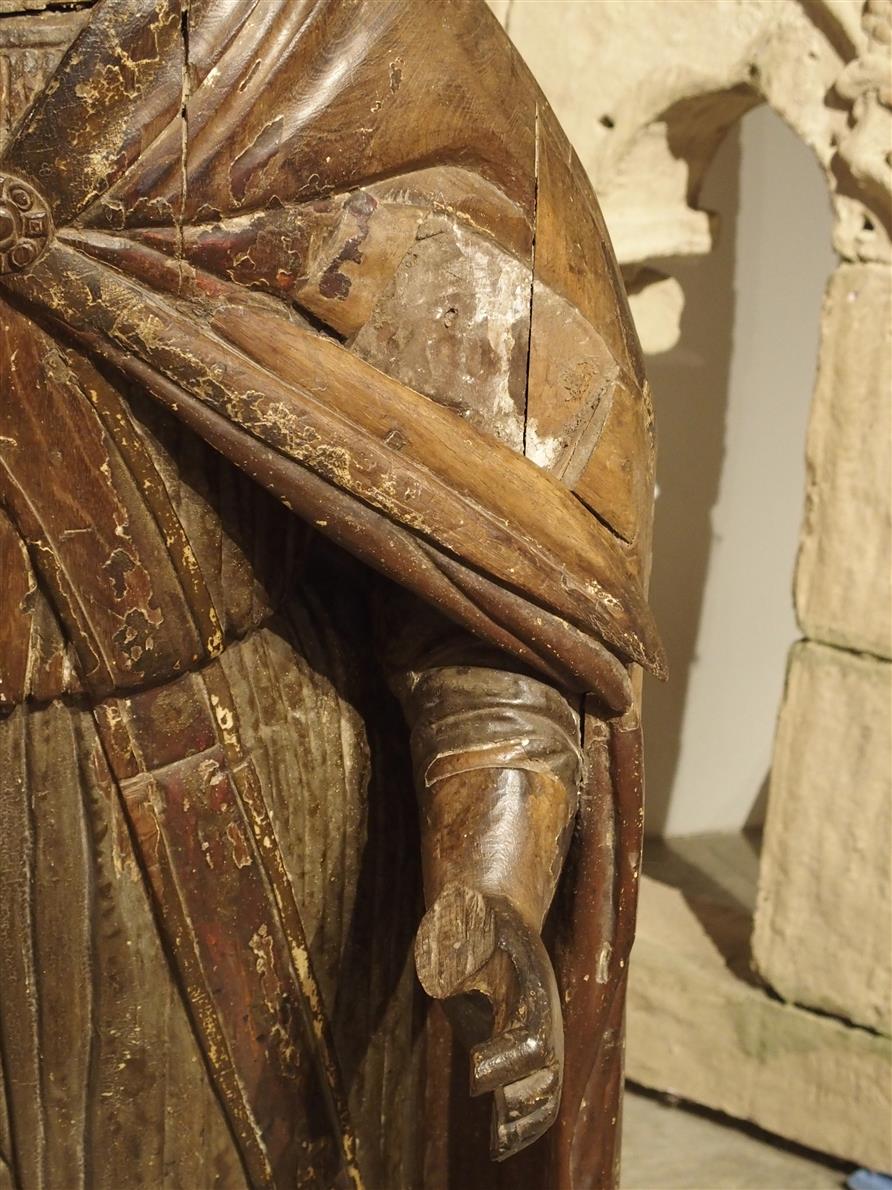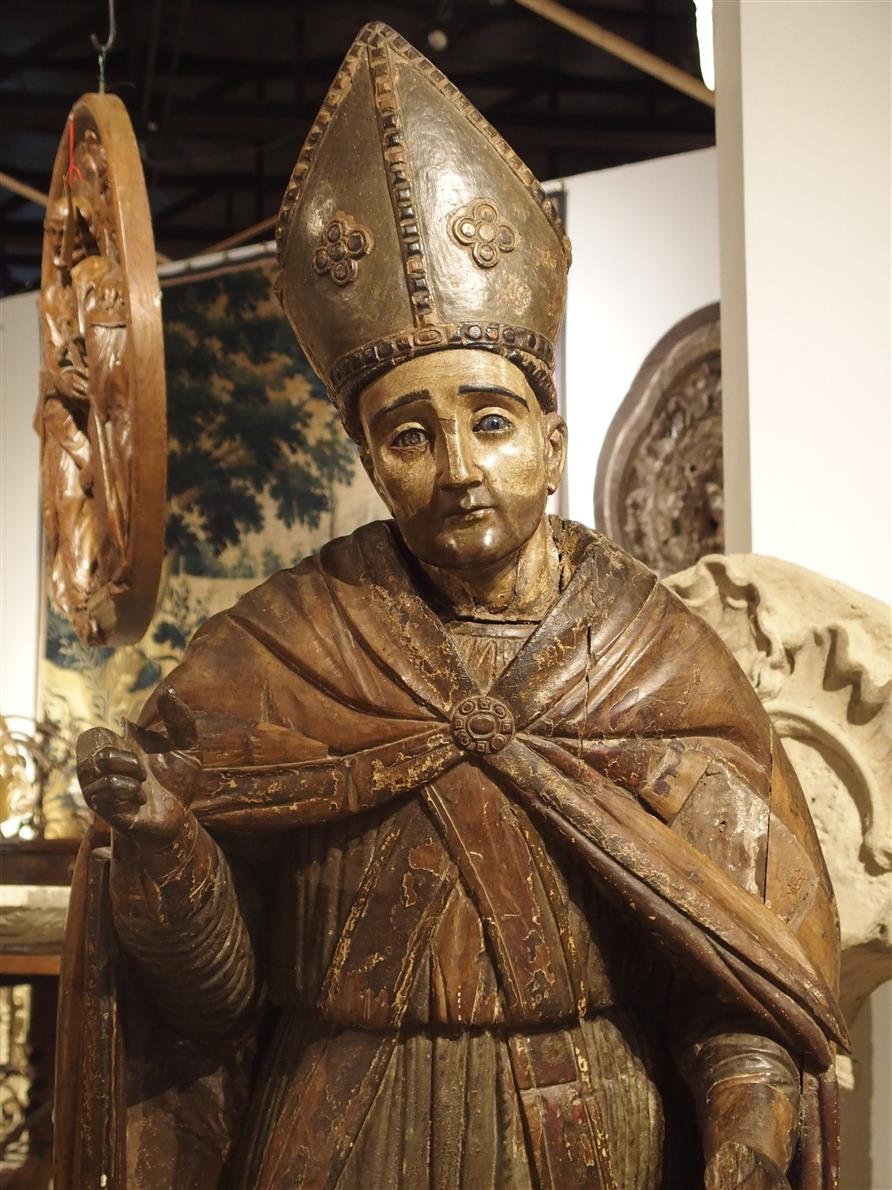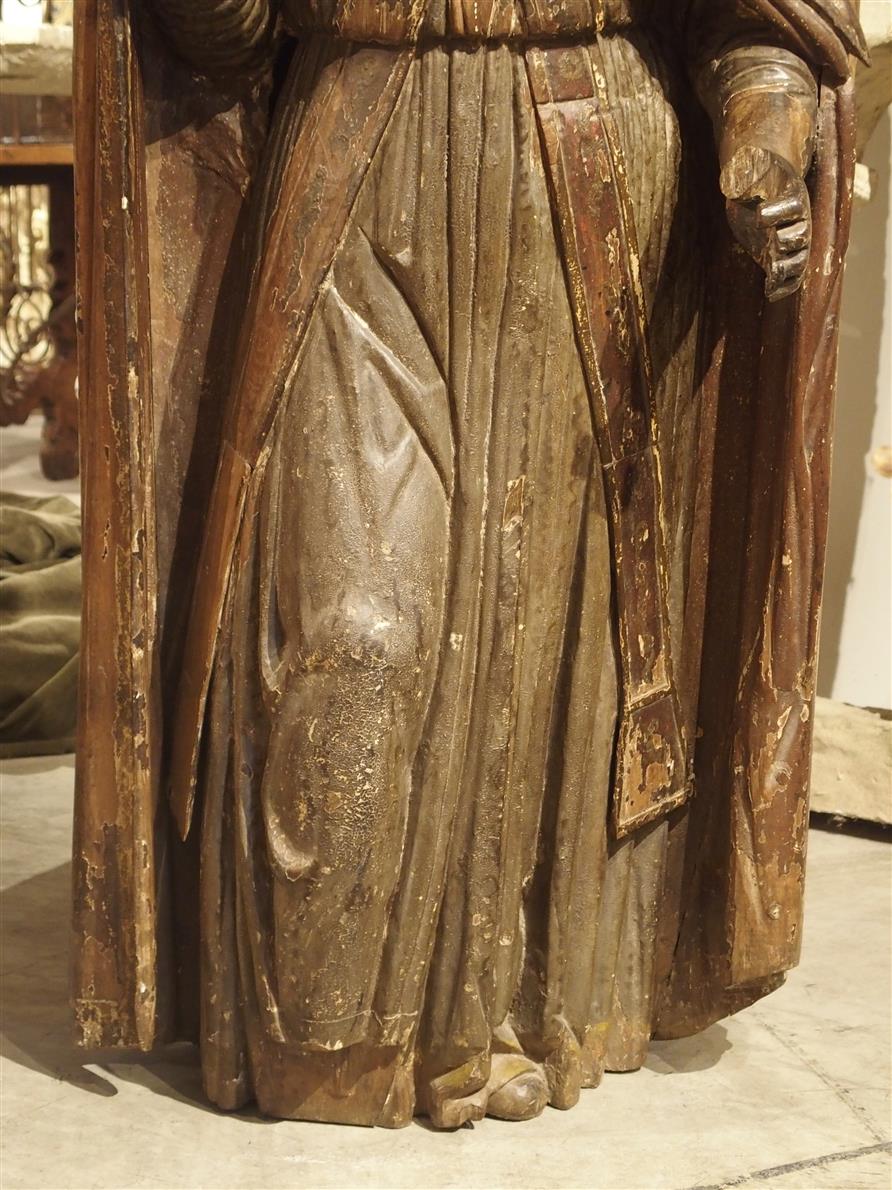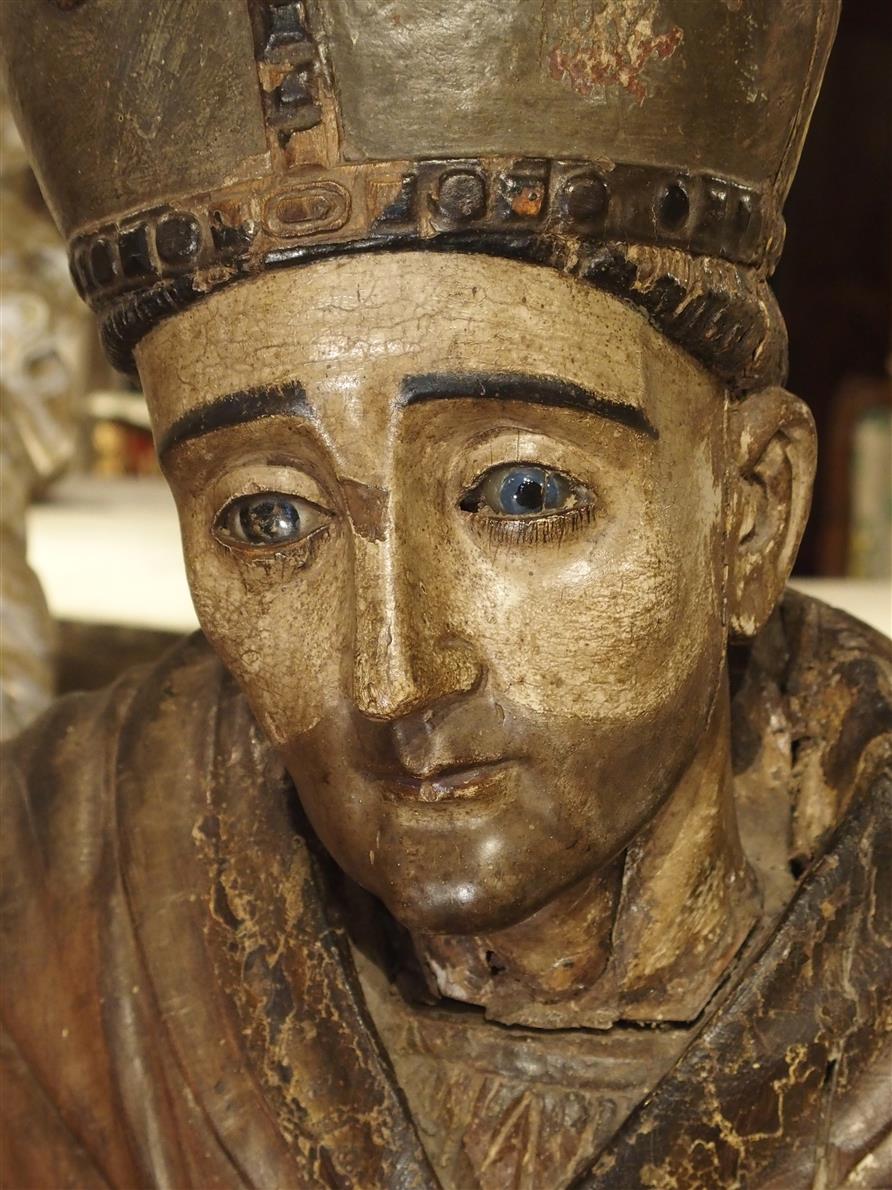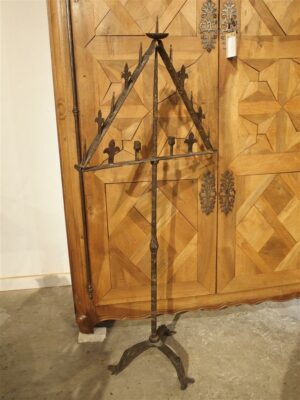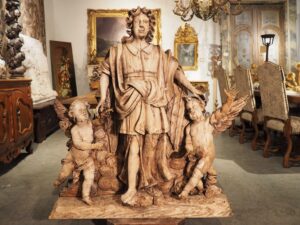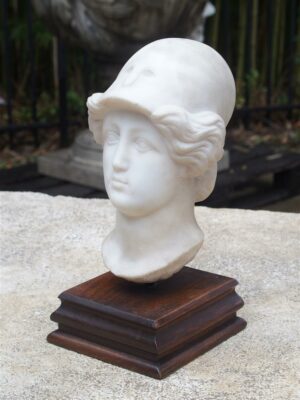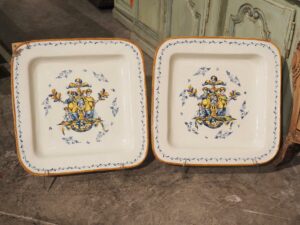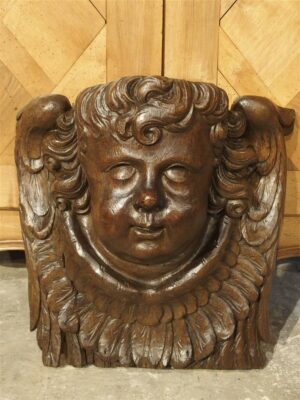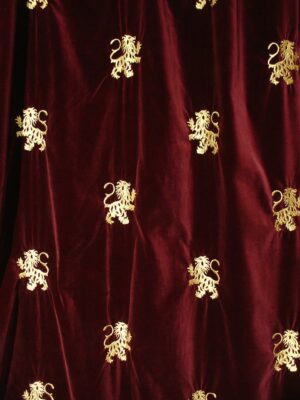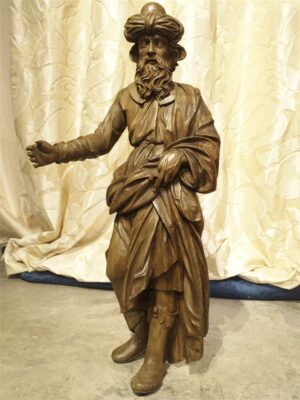This 64 inch high antique statue of a Bishop dates to circa 1650 and is German in origin. Starting in the 15th and 16th centuries, there was a large demand for ecclesiastical carvings throughout central and western Europe. Large statues were commissioned for churches and smaller items were for private use. This bishop statue is constructed of polychromed wood carved sections, in some areas, joined by iron staples and pins. Polychrome literally means many colors, and during this period of time, layers of glues, paints and glazes gave surface texture to wood. This helped imitate coverings, textiles, and even skin tones. Punches were also used to create the appearance of embroidered motifs. All of these techniques can be seen on this magnificent statue. Cloth was also attached to parts to span the gap between sections such as underarms, and around the neck, and then painted thickly to match the surrounding robe. Fraying cloth can be seen on this statue in certain areas, under close inspection. There are traces of many different colors, some of which barely remain after nearly 400 years. The back is largely hollowed, but covered by vertical planks, one showing a keyhole. The eyes are glass.
This painted antique wooden statue of a Bishop is fascinating to look at it. It is impressive at 64 inches, but it deserves to elevated and appreciated on some sort of pedestal.
CONDITION: Losses to fingers and motifs, paints, glazes and gilding. Repairs. Age separations, losses of wood, as see in photos below.


